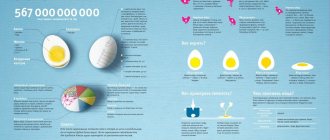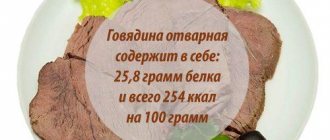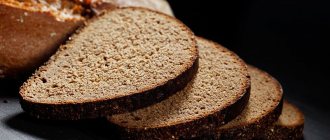Kefir is a lactic acid fermentation food product that is healthy for the human body. This drink is rich in minerals, vitamins, acids and beneficial bacteria. Kefir perfectly satisfies hunger, relaxes and soothes after a hard day at work, and improves mood. Since the calorie content of kefir is very low, its use is recommended for people who want to lose weight. Bifidobacteria, which are contained in this drink, stop the development of putrefactive processes in the intestines. Kefir normalizes metabolic processes in the body, thus helping to control body weight. With a low calorie content, kefir significantly improves the functioning of the digestive system and helps strengthen muscles and blood vessels.
Composition and calorie content of kefir of different fat contents
The most beneficial for human health is kefir with a low fat content, but not completely fat-free, namely 1%. The chemical composition of drinks of different fat content (1%, 2.5%, 3.2%) is similar in the content of nutrients and beneficial bacteria, but differs in the amount of cholesterol.
Calorie content of kefir per 100 g:
- 1% – 40 kcal;
- 2.5% – 53 kcal;
- 3.2% – 59 kcal;
- 0% (low fat) – 38 kcal;
- 2% – 50 kcal;
- homemade - 55 kcal;
- with sugar – 142 kcal;
- with buckwheat – 115.2 kcal;
- with oatmeal – 95 kcal;
- pancakes with kefir – 194.8 kcal;
- pancakes – 193.2 kcal;
- okroshka – 59.5 kcal;
- manna – 203.5 kcal.
1 glass with a capacity of 200 ml of kefir with 1% fat content contains 80 kcal, in a glass with a capacity of 250 ml – 100 kcal. There are 2 kcal in 1 teaspoon, and 8.2 kcal in a tablespoon. 1 liter of kefir contains 400 kcal.
Nutritional value of the drink per 100 grams:
| Fat content | Fats | Squirrels | Carbohydrates | Water | Organic acids | Ethanol |
| Kefir 1% | 1 g | 3 g | 4 g | 90.4 g | 0.9 g | 0.03 g |
| Kefir 2.5% | 2.5 g | 2.9 g | 4 g | 89 g | 0.9 g | 0.03 g |
| Kefir 3.2% | 3.2 g | 2.9 g | 4 g | 88.3 g | 0.9 g | 0.03 g |
Ratio of BJU kefir per 100 g:
- 1% – 1/0.3/1.3;
- 2,5% – 1/0.9/1.4;
- 3,5% – 1/1.1/.1.4.
The chemical composition of kefir is presented in table form:
| Component name | Kefir contains 1% fat content |
| Zinc, mg | 0,4 |
| Iron, mg | 0,1 |
| Fluorine, mcg | 20 |
| Aluminum, mg | 0,05 |
| Iodine, mcg | 9 |
| Strontium, mcg | 17 |
| Selenium, mcg | 1 |
| Potassium, mg | 146 |
| Sulfur, mg | 30 |
| Calcium, mg | 120 |
| Phosphorus, mg | 90 |
| Sodium, mg | 50 |
| Chlorine, mg | 100 |
| Magnesium, mg | 14 |
| Thiamine, mg | 0,04 |
| Choline, mg | 15,8 |
| Vitamin PP, mg | 0,9 |
| Ascorbic acid, mg | 0,7 |
| Vitamin D, mcg | 0,012 |
| Vitamin B2, mg | 0,17 |
In addition, the drink with a fat content of 1%, 2.5% and 3.2% contains disaccharides in the amount of 4 g per 100 g, which is approximately equal to one teaspoon of sugar, so there is no need to add additional sweetener before drinking. Kefir also contains poly- and monounsaturated fatty acids, such as omega-3 and omega-6. The amount of cholesterol in 1% kefir is 3 mg, in 2.5% - 8 mg, in 3.2% - 9 mg per 100 g.
Calories in pancakes and pancakes with kefir
The calorie content of kefir pancakes is about 200 kcal per 100 g (in one pancake - about 47 kcal). This value may vary depending on what ingredients are used when kneading the dough, for the filling and during frying.
If you want to make pancakes, you should remember that the safest option for your figure is to use water (carbonated mineral water) or a low-fat fermented milk drink for the dough. In the first case, the value of the dish is about 135 kcal, if you do not add sour cream and butter.
The calorie content of pancakes made with low-fat kefir is ~ 150 kcal. If a 2% drink is used, the indicator will increase by 50 units.
It is worth noting that the weight of even the thinnest pancake is at least 35 g. If after frying you add a little thick sour cream or berry jam, the value will increase to at least 240 kcal. See the sour cream calorie table.
Beneficial and healing properties for the body
Kefir of different fat contents has beneficial and healing properties for the female and male body. The drink is useful to drink both in the morning as a complement to the main dish, for example, buckwheat or oatmeal, for quick saturation, and at night to improve digestion and sleep.
Drinking 1-2 glasses of kefir every day has a healing effect on human health, namely:
- The functioning of the gastrointestinal tract improves. Thanks to the probiotics included in the drink, you can cure indigestion, eliminate constipation (thanks to the laxative properties of kefir) and restore normal digestive function after taking a course of antibiotics.
- Symptoms of diseases such as ulcerative colitis, irritable bowel syndrome and Crohn's disease are reduced. In addition, the drink can be drunk to prevent stomach and duodenal ulcers.
- Kefir is a preventative against infections such as Helicobacter, E. coli, and salmonella.
- The risk of developing osteoporosis is reduced, bones are strengthened.
- The risk of malignant formations and the appearance of cancer cells is reduced.
- The symptoms of allergies and asthma are reduced.
- The intestines and liver are cleansed of toxins, waste, and salts.
- The weight loss process accelerates.
- Swelling decreases. Excess fluid is removed from the body due to the diuretic properties of the drink.
- The functioning of the cardiovascular system improves. Blood pressure is normalized and the level of bad cholesterol in the blood is reduced, which reduces the likelihood of developing thrombosis.
Kefir can be drunk by people with lactose intolerance. The drink is useful for athletes after physical activity, as it helps to quickly restore strength, satisfy hunger and fill the body with energy. In addition, the protein contained in the composition helps build muscle mass.
Note: after an exhausting physical workout, it is necessary to saturate the body not only with proteins, but also with carbohydrates. To do this, athletes are recommended to make a protein shake from kefir with the addition of banana.
Women use kefir for cosmetic purposes. It is used to make nourishing masks for the face and hair roots. The drink relieves skin redness and relieves pain from sunburn.
Low-fat kefir has the same health benefits as a 1% fat drink, but contains fewer calories and no fat.
© Konstiantyn Zapylaie — stock.adobe.com
The benefits of homemade kefir
Most often, kefir prepared at home contains more beneficial bacteria, vitamins, as well as micro- and macroelements and polyunsaturated fatty acids. However, homemade fermented milk drink has a shorter shelf life.
The benefits of homemade kefir for humans are as follows:
- The one-day drink has laxative properties, so it is recommended to drink it for bowel problems such as constipation. It removes waste and toxins from the body.
- The two-day drink is recommended for people with diseases such as gastritis, diabetes, hypertension, kidney and liver diseases, colitis, heart disease, and bronchitis. Recommended for those who have suffered a stroke and myocardial infarction.
- Three-day kefir has the opposite properties to one-day kefir. It strengthens, so it is recommended to drink the drink to treat indigestion.
Also, one-day homemade kefir helps with flatulence, bloating and heaviness in the stomach. To eliminate discomfort, it is recommended to drink the drink in the morning or at night before bed.
Benefits of buckwheat and cinnamon
To improve digestion, it is recommended to start the morning with kefir, but not in its pure form, but together with other products, such as buckwheat, oatmeal, cereals, flax and cinnamon, to enhance the positive effect on the body.
It is useful to eat raw buckwheat soaked/brewed with kefir on an empty stomach, since buckwheat contains a large amount of dietary fiber, and kefir contains bifidobacteria. Eating the dish speeds up the process of cleansing the intestines of toxins, after which it fills it with beneficial flora.
Kefir with the addition of cinnamon helps you lose weight and quickly satisfies your hunger. Cinnamon reduces appetite and helps speed up metabolism, while kefir cleanses the intestines, making cinnamon components better absorbed into the blood.
Kefir with the addition of flax and grains helps you feel full faster, cleanse your intestines and maintain a feeling of fullness for a longer period.
Summarize
Until now, most studies on the effects of kefir on the human body show positive effects. One study found that this fermented milk drink has strong antimicrobial, anti-inflammatory, antioxidant, and antitumor properties (29).
Research has shown that kefir may also help improve digestive health in a variety of ways, including directly inhibiting pathogens and increasing the production of beneficial bacteria. Consuming this product may even be effective in treating ulcers (30).
Kefir
Kefir as a means for weight loss
An important stage of losing weight is cleansing the body of excess fluid, waste, salts and toxins. The presence of by-products in the body negatively affects a person’s well-being, causing fatigue, headaches, and allergies. Systematic consumption of 1% fat kefir ensures a regular and uninterrupted process of cleansing the intestines of harmful substances.
There are many mono- and regular diets using kefir. With its help, it is recommended to arrange fasting days to improve digestion and relieve swelling. During a fasting day, the daily dose of kefir consumption should not exceed 2 liters. It is recommended to take it with a higher fat content, for example, 2.5%, to satisfy the feeling of hunger and maintain satiety for a longer period.

© sabdiz — stock.adobe.com
In addition to following diets for weight loss, you can include in your diet dishes using a drink with 1% fat content. Eat buckwheat, oatmeal and fruit seasoned with kefir for breakfast.
Instead of a snack, it is recommended to drink a glass of kefir with a spoonful of honey, flaxseeds (or flour), cinnamon, turmeric or cereals. An alternative option is a kefir smoothie with beets, apples, ginger or cucumber.
To lose weight, it is recommended to drink kefir at night instead of dinner in an amount of no more than 1 glass and without adding fruits or other foods. The drink should be consumed slowly and with a small spoon to satiate and satisfy the feeling of hunger. Thanks to this method of consumption, kefir is better absorbed.
There are contraindications!
Of course, all fermented milk products are extremely beneficial for the human body, more precisely, for an adult. Children should consume kefir infrequently, and children under one year old should not be given it at all. Some adults may experience heartburn from using this product. It should be noted that the low calorie content of 1 percent kefir (a glass of the drink contains about 100 kcal) does not at all indicate that you should drink it in large quantities. In everything you need to know when to stop.
Harm to health and contraindications
Consuming low-quality kefir or a drink with an expired kefir risk of food poisoning.
Contraindications to drinking fermented milk drink are as follows:
- allergy;
- exacerbation of gastritis;
- ulcer in the acute stage with high acidity;
- poisoning;
- gastrointestinal infection.
Drinking homemade three-day kefir is not recommended for people with exacerbation of any stomach or intestinal diseases and those who suffer from kidney diseases.
You cannot follow a diet in which breakfast consists of buckwheat and kefir for more than two weeks in a row. Exceeding the recommended period may cause deterioration in health, namely headaches, weakness in the body and fatigue.
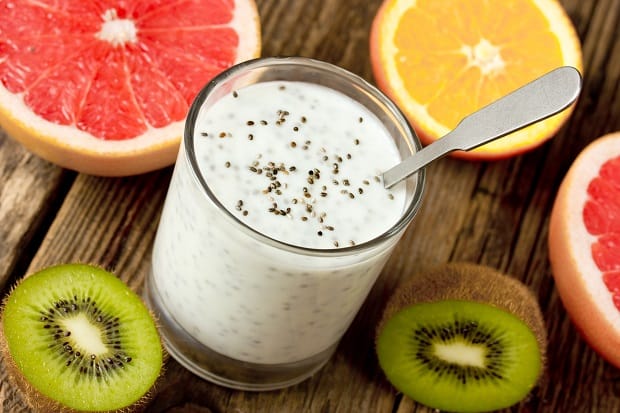
© san_ta — stock.adobe.com
How to store
All dairy products spoil quickly, so when purchasing, you should pay attention to the expiration dates indicated on the packaging. If you suddenly accidentally purchase low-quality 1% kefir, the calorie content of which does not exceed 40 kcal, and consume it as food, you can be seriously poisoned and spend several days in a hospital bed.

Never buy expired dairy products or store them outside the refrigerator. If you leave a bag or bottle of kefir on the table for just a few hours, it will become completely unsuitable for food. In hot weather this time is reduced to two hours. A fairly short sales period allows you to buy only fresh 1% kefir. The calorie content, benefits and harms of this product are now known to you.
Biokefir
In addition to traditional kefir, biokefir is also commercially available - a fermented milk product that is produced not only using kefir grains, but also other starter preparations: acidophilus bacillus, lactic acid streptococci, bifidobacteria.
The taste of biokefir is practically no different from regular kefir, but the bacteria that are added to the kefir grains are more resilient and are not immediately destroyed in the gastric juice. They enter the intestines in their original form, where they reduce the activity of pathogenic bacteria and normalize metabolism.
History of appearance
Although humanity has known naturally fermented dairy products for thousands of years, kefir grains, which are used to make a product that is freely sold in stores, were discovered only in 1867.
The recipe for a long time belonged to the Balkars and Karachais who lived at the foot of Elbrus. The secret of kefir fungus was brought to Soviet factories by dairy worker Irina Sakharova. She was sent to Karachay as a delegate of the All-Russian Society of Doctors, but the beautiful girl was kidnapped as a bride. The case went to court, where the kidnapped woman did not demand compensation other than the kefir recipe. And she got it. Already in 1913, industrial production of the drink began.
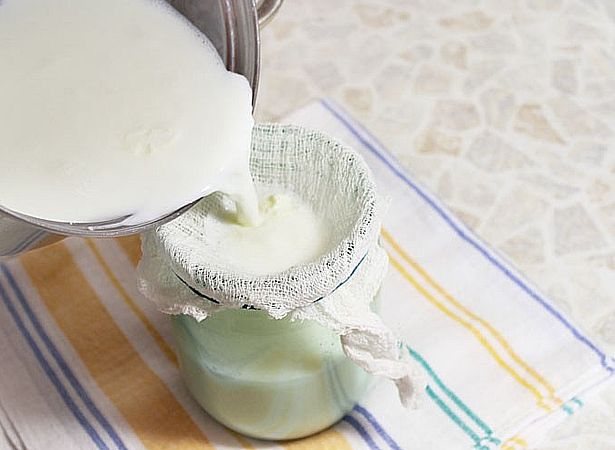
Classic recipe
The classic kefir recipe is simple. It includes a minimal amount of ingredients, the process does not take much time and does not require the use of special equipment, such as a yogurt maker. To obtain a fermented milk product, you need fresh milk, high-quality starter culture and clean utensils for fermentation.
Composition of ingredients
There are several types of kefir starters:
To obtain a nutritious and tasty drink, it is recommended to use goat or cow's milk with a fat content of at least 3%.
Step-by-step cooking process
Kefir made using ready-made starter culture will have the same calorie content per 100 g as a drink fermented by adding ready-made fermented milk products, but the preparation process itself will be slightly different.
To make homemade kefir using dry starter, you need to follow a few simple steps:
The shelf life of homemade kefir is no more than 5 days. It can be eaten immediately after fermentation, but it is believed that the taste of the drink is fully revealed after ripening at low temperatures.
The algorithm for fermenting milk using ready-made fermented milk products is identical. As a starter, use purchased sour cream or kefir in a proportion of 2 tsp. for 1 l. basics. From full-fat milk you can get not only a thick and nutritious product, but also a couple of spoons of excellent cream that forms a thin film on the open surface of the drink.
What can I add?
Kefir, whose calorie content per 100 grams is so low that it can be classified as a light diet drink, can be turned into a full-fledged dish if you add additional ingredients.
Most often the following ingredients are added to it:
Of course, any additives affect not only the taste of the drink, but also its energy value. High-calorie mixes are best consumed before lunch or instead of the last meal.
How to serve a dish
Kefir is, first and foremost, a drink. As a rule, it is served in portions, and there are no special requirements for the type of serving. It can be poured into cups, glasses or bowls. Kefir goes well with all types of green vegetables and leafy greens, including parsley, dill and celery, so it can be served in a saucepan as a salad dressing.
The taste of the drink is perfectly complemented by fresh, dried and dried fruits, jams, preserves and honey.
Kefir goes well with all types of cereals. It can be consumed with cereal or muesli for breakfast, and you can also prepare oatmeal based on it. Such dishes are usually served in plates.
Using kefir grains
The best product is obtained by fermenting milk using kefir grains. To get 2 glasses of drink you will need a glass jar with a capacity of ½ liter, 2 tsp. fungus, 1-1.5 tbsp. milk and a fine sieve.

Cooking algorithm:
If there is no need for kefir, the fungus should be washed, filled with milk, covered with a napkin or gauze and stored in the refrigerator. The culture must be washed at least once every 2 weeks.
Cleansing the body with kefir
Cleansing the body with kefir is one of the most popular methods today. The beneficial components it contains help with many diseases.
Before you start cleansing the body with kefir, you need to make sure that there are no contraindications. The cleansing procedure is carried out over four days. In the first two days, you must give an enema in the morning. In total, about three liters of boiled water should be used. Then every hour throughout the day you need to drink 200 ml of kefir. On the first day, it is advisable not to eat or drink anything else. If you feel an irresistible feeling of hunger, you can eat a few crackers.
If you feel chills or weakness, wipe your body with a vinegar solution and warm your feet. On the second day, every two hours you are allowed to drink a glass of fresh juice - vegetable or fruit. Additionally, you can drink water. On the third day, you should drink fresh juice for breakfast. During the day you can eat stews, vegetable salads, soups. On the fourth day, you can add vegetable oil to your diet.



